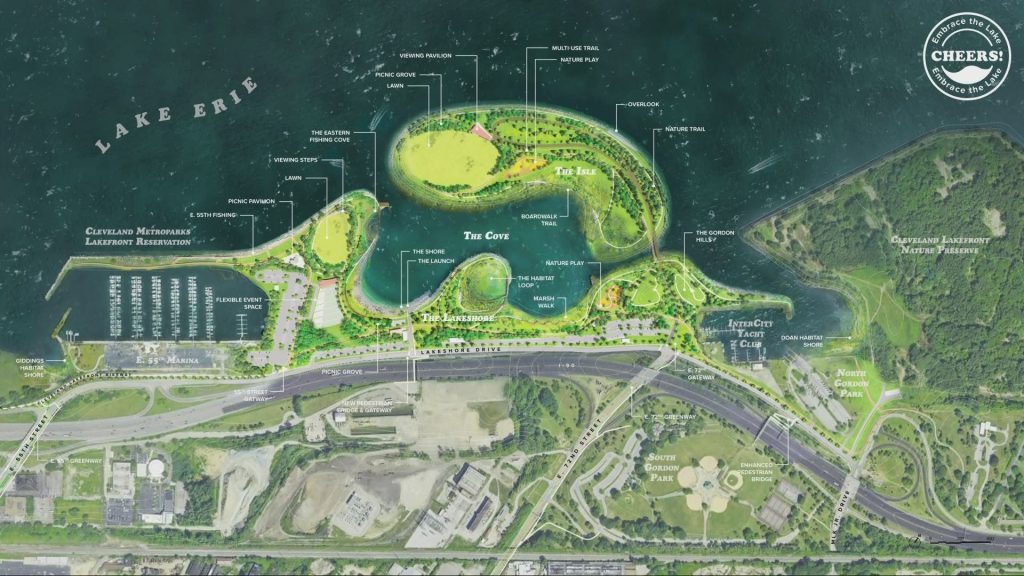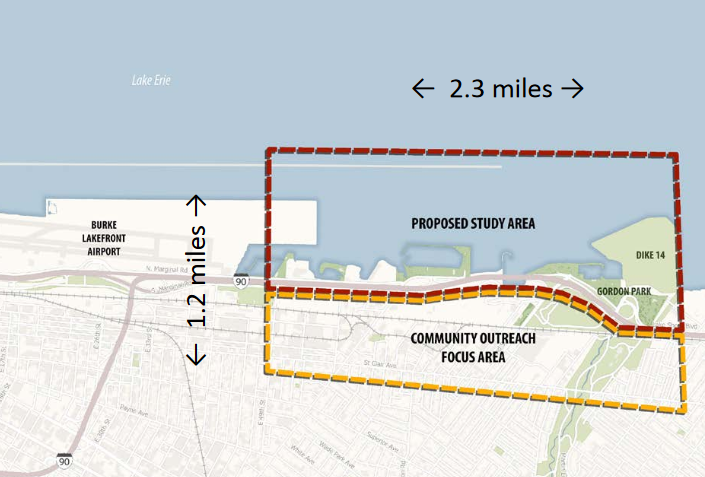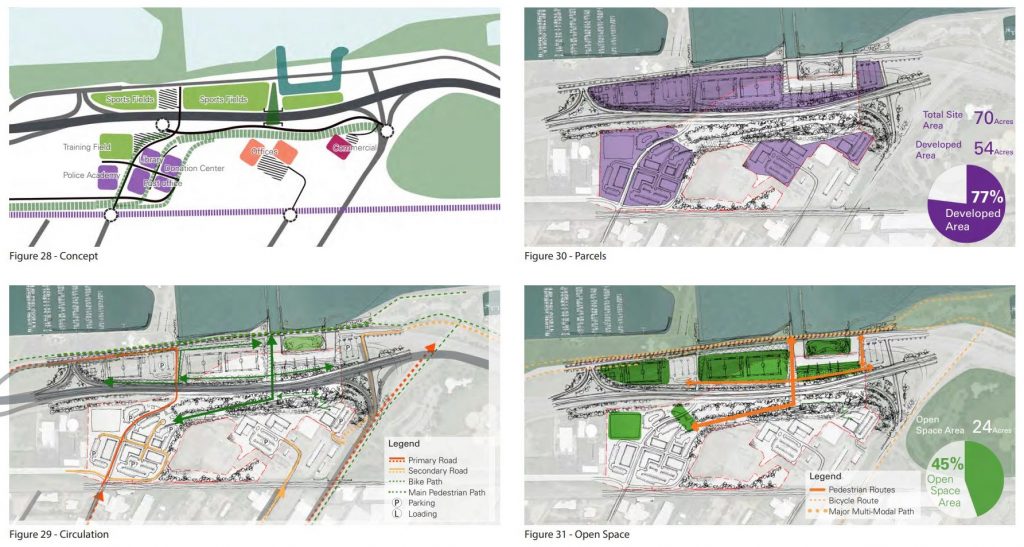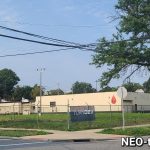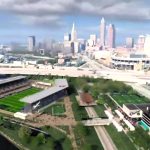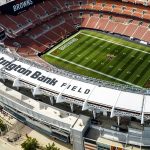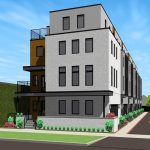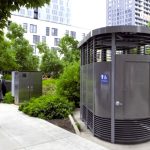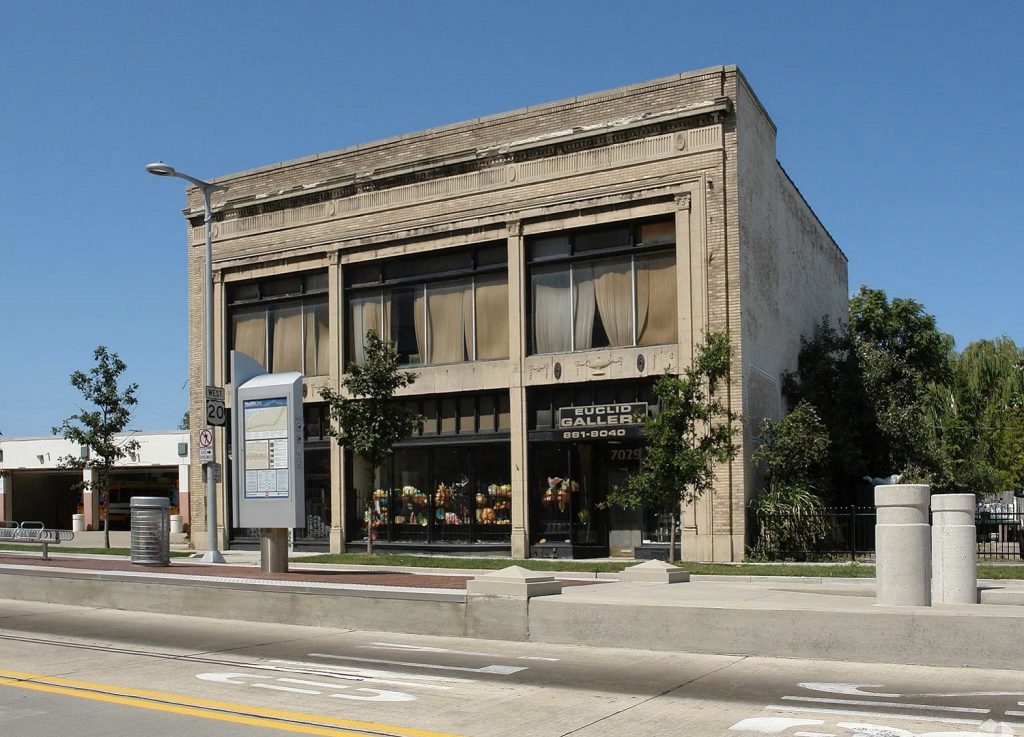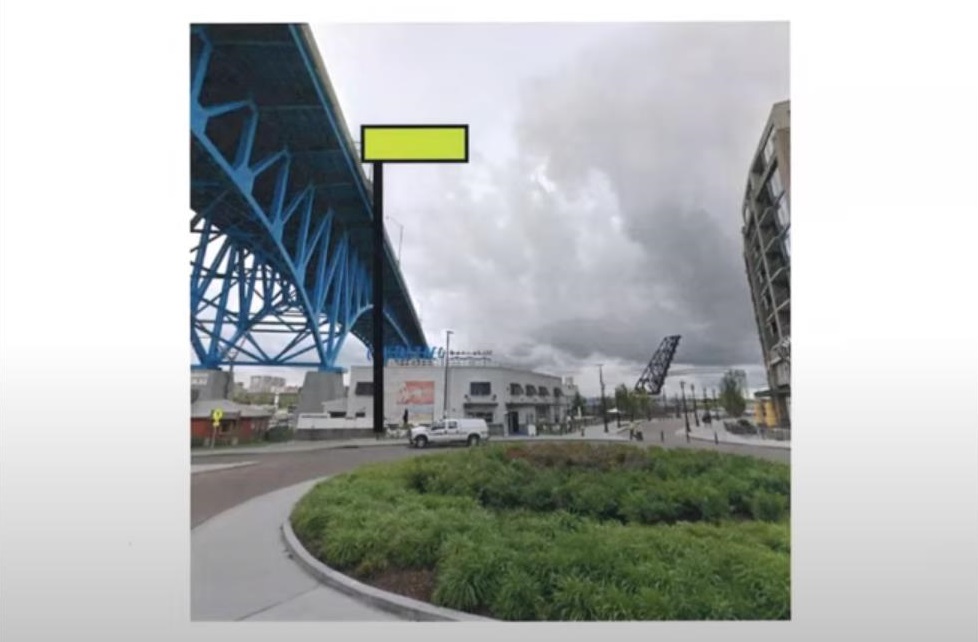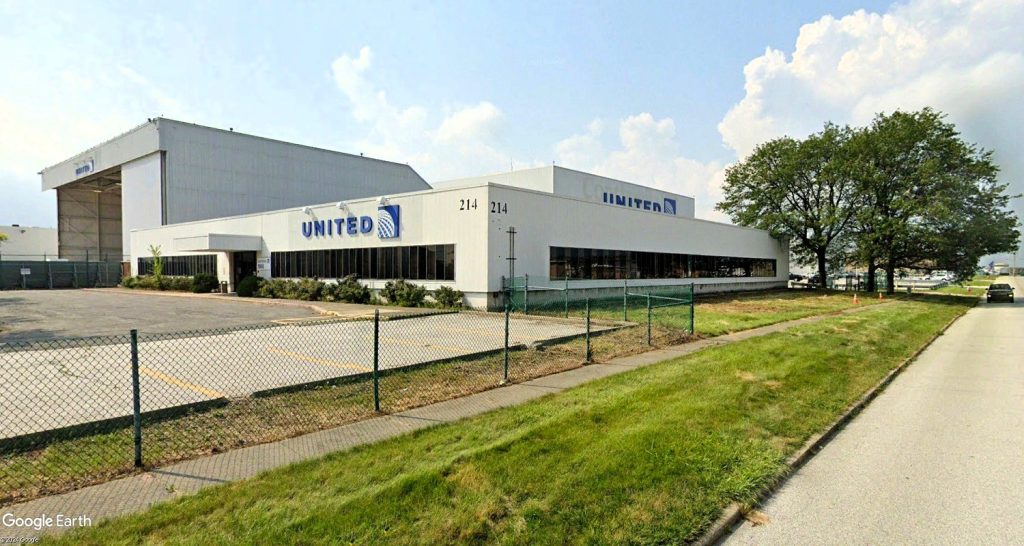A conceptual plan for expanding lakefront land farther out into Lake Erie would not only create more land for lakefront recreation, but it would also protect Interstate 90 from damage by wave action and rising lake water levels resulting from climate change (Metroparks). CLICK IMAGES TO ENLARGE THEM
Metroparks wins grant to make project shovel ready
While shovel-ready plans for an expanded lakefront park just east of downtown Cleveland could be just 18 months away, don’t expect to be able to use that enlarged park for many more years. That’s especially true for a proposed off-shore park island.
U.S. Senator Sherrod Brown (D-OH) announced yesterday that the National Oceanic and Atmospheric Administration (NOAA) and the National Fish and Wildlife Foundation (NFWF) through the National Coastal Resilience Fund (NCRF) has awarded a $985,000 grant to the Cleveland Metroparks for the Cleveland Harbor Eastern Embayment Resilience Design and Engineering (CHEERS) Plan.
It was the second federal grant of almost identical size won by the Metroparks this past week. Earlier, the Metroparks won a $950,000 grant from the U.S. Department of Transportation to develop shovel-ready plans for two hike-and-bike trails and to study the feasibility of two others. All four trails would be part of the ambitious Cuyahoga Greenways Plan.
The latest funding award will help design a plan for 79 acres of water and public parkland along Cleveland’s Lake Erie shoreline to build habitat and expand parks, protecting the critical infrastructure of Interstate 90 along the shore, and stabilizing the unpredictable high wind and waves adjacent to key recreation and transportation facilities. Brown wrote to the National Fish and Wildlife Foundation in support of this project. Once the planning work is done over the next 18 months, the Metroparks can apply for federal construction funds.
“Lake Erie is one of Ohio’s most important natural resources and we must do all we can to keep it healthy for the families, boaters, and anglers that use the lake every day,” said Brown in a written statement. “Redeveloping Cleveland’s eastern lakefront is good for the city and will increase access to this irreplaceable resource.”
Brown said he has worked to secure important wins for Lake Erie through legislation and by speaking out against harmful proposals that threaten the health of Lake Erie. The park improvements will also help attract residents and jobs to former industrial areas and neighborhoods near the lakefront.
But depositing material dredged from the Cuyahoga River and Port of Cleveland to create the expanded lakefront park and a planned new island will take one to two decades. The material needs to be dredged to maintain sufficient drought for large ships. And it needs to be deposited somewhere; now it is deposited at the northeast of Burke Lakefront Airport. Depositing dredged material in new locations requires federal permits from the Army Corps of Engineers. The upcoming designs will aid in securing those permits.
Brown helped secure investments for Ohio water infrastructure projects as part of the Water Resources Development Act of 2020 (WRDA 2020). WRDA 2020 invests in key water infrastructure projects to be studied, planned and developed by the Army Corps, including our nation’s ports, inland waterways, locks, dams, flood and coastal storm protection and ecosystem restoration.
The CHEERS planning effort began in May 2020 with funding from the Metroparks, the National Fish and Wildlife Foundation, Ohio Department of Transportation (ODOT), Cleveland-Cuyahoga County Port Authority, Ohio Department of Natural Resources (ODNR) Office of Coastal Management and City of Cleveland. Expertise and technical support was added by the Northeast Ohio Areawide Coordinating Agency (NOACA), Cuyahoga County Soil and Water, Doan Brook Watershed Partners and the Trust for Public Land.
In addition to an expanded lakefront park providing more recreational opportunities and a better quality of life for Greater Clevelanders, it also is protecting the shoreline from rising lake levels due to climate change. That’s being felt greatly by Interstate 90’s infrastructure. This situation is most critical on the section of highway that was built around FirstEnergy’s Lake Shore Power Station that was demolished in 2017.
The transcontinental highway averages 160,000-plus vehicles a day on this section yet is separated from the inland sea’s pounding waves by only a skinny bike path. That section took a beating from 20-foot-high waves during Superstorm Sandy in the fall of 2012, and it continues to be slammed by storms whose damage is made worse by record high lake water levels in recent years. Because of climate change, water levels are forecast to rise even higher.
The nonprofit advocacy group Green Ribbon Coalition Inc. suggested moving Interstate 90 away from Lake Erie. through the former site of FirstEnergy’s Lake Shore Power Station. That would reuniting two halves of Gordon Park and open up land near the lakefront but south of I-90 for development. However the CHEERS study found it would be more cost-effective to fill in Lake Erie and expand park land farther out into the lake.
END

